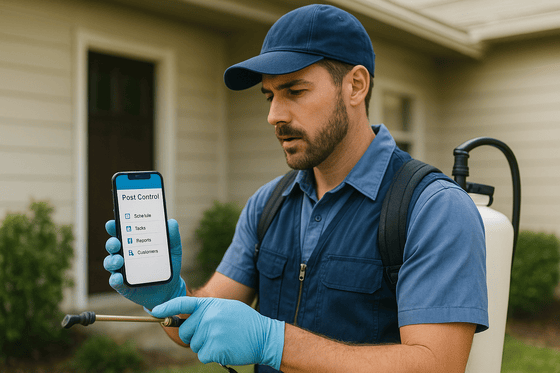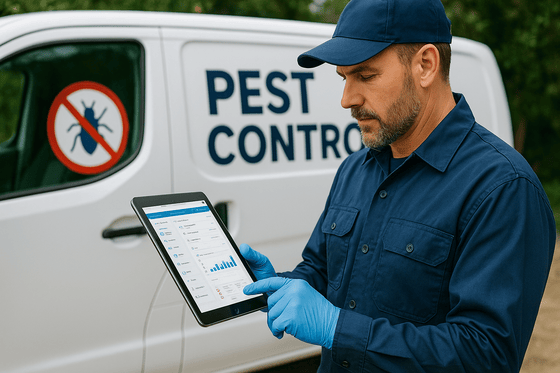Who is Responsible for Pest Control When Renting in NSW?
Discover who is responsible for pest control when renting in NSW. Learn about tenant and landlord obligations.
Introduction: Navigating Pest Control Responsibilities in Rental Properties
When it comes to pest control in rental properties, understanding who is responsible can be a complex issue. This is particularly true in New South Wales (NSW), where specific regulations govern the responsibilities of landlords and tenants. If you've ever found yourself asking, "Who is responsible for pest control when renting in NSW?" then this guide is for you.
Understanding the Residential Tenancies Act: A Key to Responsibilities
The Residential Tenancies Act 2010 and Residential Tenancies Regulation 2019 are the primary pieces of legislation that outline the rights and responsibilities of both landlords and tenants in NSW. These laws provide a clear framework for determining who is responsible for pest control when renting in NSW. They cover a range of scenarios, from general maintenance and repair obligations to specific issues like pest infestations.
Tenant's Responsibilities: Keeping the Premises Pest-Free
According to the Residential Tenancies Act 2010 and Residential Tenancies Regulation 2019, tenants have several responsibilities when it comes to maintaining the rental property in NSW. One of these is to keep the premises reasonably clean, which includes managing any pest problems that arise due to the tenant's activities or negligence.
If pests infest the property due to the tenant's actions, such as leaving food out or not disposing of rubbish correctly, it is the tenant's responsibility to deal with the issue. This could involve hiring a pest control service to eliminate the infestation. Tenants are also required to report any damage or disrepair as soon as possible, which includes notifying the landlord of any serious pest issues that they cannot manage on their own.
Landlord's Responsibilities: Providing a Habitable Environment
On the other hand, landlords also have obligations under the Act. They are required to provide the premises in a reasonably clean state and fit for habitation, which means free from pests at the start of the tenancy.
If a pest infestation occurs that is not due to the tenant's actions, such as termites or structural issues attracting pests, it is typically the landlord's responsibility to handle the problem. They are also required to maintain the premises in reasonable repair, which includes addressing any structural issues that may contribute to a pest problem.
Landlords are also responsible for making any repairs referred to in the original condition report. If a pest issue was noted in this report and it has not been addressed, the landlord could be responsible for dealing with it.
It's important to note that the specific responsibilities of landlords and tenants can vary depending on the terms of the lease agreement, so it's always a good idea to check your contract or consult with a legal professional if you're unsure about who is responsible for pest control when renting in NSW.
What to Do in Case of a Pest Infestation
When it comes to pest infestations, both tenants and landlords have roles to play to ensure the issue is addressed promptly and effectively. Here's what you need to do if you discover a pest infestation in your rental property in NSW.
For Tenants:
- Identify the Pest: The first step is to identify the type of pest causing the infestation. This will help determine who is responsible for managing the pest control.
- Notify Your Landlord: Once you've identified the pest, notify your landlord or property manager as soon as possible. It's best to do this in writing, so you have a record of the communication.
- Cooperate with Pest Control Measures: If the landlord arranges for pest control, you'll need to cooperate with the pest control professionals. This may include preparing your home for treatment and vacating the premises during the treatment if necessary.
For Landlords:
- Confirm the Infestation: When a tenant reports a pest infestation, confirm the presence of pests and identify the type of pest.
- Arrange for Pest Control: If the pest infestation falls under your responsibilities, arrange for professional pest control. It's important to do this promptly to prevent further damage to the property.
- Follow Up: After the pest control treatment, follow up with the tenant to ensure the infestation has been effectively dealt with. If the pests return, additional treatments may be necessary.
Disputes and Resolutions
Despite the clear guidelines provided by the Residential Tenancies Act, disputes can still arise between landlords and tenants regarding pest control responsibilities. Here's what you can do if you find yourself in such a situation.
For Tenants:
If you believe your landlord is not fulfilling their pest control responsibilities, you can apply to the NSW Civil and Administrative Tribunal (NCAT) for a repair order. The NCAT can order the landlord to carry out pest control if it determines that the landlord is responsible.
For Landlords:
If a tenant is not fulfilling their responsibilities, such as keeping the premises clean or permitting damage, you can issue a notice of breach to the tenant. If the tenant does not rectify the breach, you can apply to the NCAT for an order to resolve the issue.
Remember, open communication and understanding each other's responsibilities can go a long way in preventing and resolving disputes. When in doubt, refer to the Residential Tenancies Act or seek legal advice.
Streamlining Pest Control Services with the Pest Management App
If you're a pest controller looking to enhance your services, especially in the context of rental properties, the Pest Management App can be a game-changer. Here are a few key benefits:
- Automated Reminders: The app can set auto reminders for both you and your customers for regular inspections, whether yearly or half-yearly. This ensures that no inspection is missed, and pest control measures are always up to date.
- Comprehensive Reporting: The app allows you to generate detailed and professional reports directly from the app, reducing the time and effort required to compile and present inspection findings.
- Customer Relationship Management: With robust CRM features, you can maintain strong relationships with your clients, track service history, and efficiently address their concerns, fostering a personalized and professional experience.
- Scheduling and Task Management: The app's scheduling and task management features can help you manage your workload more effectively, ensuring that you can promptly respond to all inspection requests.
By leveraging these features, pest controllers can provide a higher quality of service, ensuring customer satisfaction and compliance with pest control responsibilities in rental properties.
In Summary
Understanding who is responsible for pest control when renting in NSW is crucial for both landlords and tenants. It helps prevent disputes and ensures that pest infestations are dealt with promptly and effectively. While the Residential Tenancies Act 2010 provides a legal framework for these responsibilities, it's essential for both parties to communicate and cooperate to maintain a pest-free living environment.
As a pest control professional, real estate agent, or property manager, staying informed about these responsibilities can help you provide better service to your clients. And with tools like the Pest Management App, managing pest control tasks can become a breeze.



















